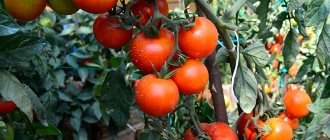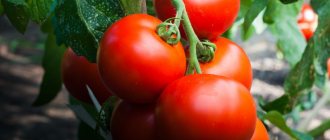Among all the varieties of nuts, hazelnuts are among most people's favorites. It has a delicate, slightly sweet taste and goes well with any dried fruits, chocolate, and marshmallows. It is used to prepare nut butter, flour, and is added to baked goods, candies, pastries, cakes, etc. Hazelnuts are often called hazelnuts or hazels, in the mistaken belief that they are the same thing. Is this statement true? Is there a difference between these plants? We will tell you about the difference between hazelnuts and hazelnuts in our article. But first, let's look at the definition and characteristics of these plants.
What is hazel?
Another name for this plant sounds like hazel. But most people know it as hazel or hazelnut. To be more precise, this is not even one plant, but a whole genus of shrubs (in rare cases, trees) that belong to the Birch family.
Hazel got its name due to the special shape of its leaves, which resemble the appearance of a bream fish. An adult plant reaches a height of 3-7 m. The branches of the bush are covered with brown bark. The leaves have a heart-shaped base and a pointed tip. The fruits are edible brownish-yellow nuts enclosed in a shell of leaves that resemble a bell in appearance.
In total, there are about 20 plant species that are widespread in Eurasia and North America. In the European part of Russia, in the Baltic states, Ukraine and Belarus, common hazel grows. The plant prefers fresh, moist and fertile soils of broad-leaved and mixed forests. The average lifespan of a shrub is 80 years.
Are hazelnuts and hazelnuts the same thing or not?
Many people believe that these are two names for the same plant. And there really is some truth in this. Hazelnuts and hazelnuts (pictured) have the following similarities:
- plants belong to the same family (Birch) and genus (Hazel);
- their bushes and fruits look exactly the same;
- nuts are no different from each other in appearance, composition, properties and taste.
In fact, it is quite difficult to determine the difference between hazelnuts and hazelnuts. The fruits of the plants do not even differ in shape: in both the first and second cases it can be either oblong or round. So, maybe there are no differences between plants? Let's consider this issue in more detail.
It's time to harvest
As we have already said, hazel and hazelnuts grow quite quickly, so experienced gardeners carefully monitor their ripening process. People start collecting nuts at different times - it all depends on the variety and climate of the area where the bush grows.
This usually occurs from July to September. How do you know when the time has come? As soon as the outer shell turns brown, the nut is ripe!
As a rule, in July the fruits are still green, which means they are not quite ready for harvesting and subsequent processing.
Of course, they contain all the useful substances, substances, and taste qualities available. But the main difference between unripe nuts and mature ones is their short shelf life due to intense drying.
By the end of August, most of the fruits ripen, their skin turns yellow. This is the main sign of the initial maturity of the nut. Fruits picked at this time are stored for quite a long time.
By mid-September the nuts are still ripening. They can already be eaten raw, since in principle they are ready for consumption. And after another two weeks, the overripe fruits fall to the ground.
And this cannot be allowed to happen. To get a quality harvest, you need to take care of it. Namely:
- It is recommended to collect nuts in clear, warm weather - so that they do not get wet and rot;
- hazelnut branches must be carefully shaken - then fully ripened nuts will fall;
- fallen nuts should not be left on the ground for more than three days - moisture can cause the kernels to become infected with mold;
- Fruits should be picked from the ground without removing the peel.
Hazelnuts and hazelnuts - what's the difference?
As mentioned above, these two plants belong to the same family and genus. And at first glance, there really is no difference between them. Hazelnuts and hazelnuts (pictured) can be either oblong or round. It all depends on the plant variety.
So what is the main difference between hazelnuts and hazelnuts? It consists in the fact that hazel is a wild plant that is found in deciduous forests and on the edges, and hazelnut is cultivated as a nut-bearing bush that produces a high yield. The fruits of hazelnut or hazel are usually smaller in shape, and its yield is not as high. This is explained primarily by the peculiarities of plant care. But in terms of taste and other qualities, hazel is absolutely no different from hazelnuts.
Looking for the difference
First you need to understand what a hazelnut or hazelnut is. It is a shrub or tree that grows in different countries and climate zones. There are 22 types of hazelnuts in total.
They differ in height, resistance to heat and cold, life expectancy, productivity and other indicators. Some of these varieties have been crossed by experienced breeders to improve the breed.
And as a result, hazelnuts were bred.
Thus, it is safe to say that hazelnuts are just one of the varieties of hazelnuts, an improved variety. But it’s still worth understanding: if we consider hazelnuts and hazelnuts, what is the difference between them.
Mostly the size of a fruit. They are much smaller in wild walnuts than in cultivated walnuts. In addition, with proper care, hazelnuts produce a rich harvest every year.
And for a wild walnut, even if you plant it in the garden and take good care of it, the yield is much lower.
If you want to grow it in a rural area, where you cannot come at least once a week to care for the garden, then it makes sense to choose hazelnuts, as they are more durable and less extravagant for growing conditions.
Again, if you understand the difference between hazelnuts and hazelnuts, then it's easy to identify the relationship in advance. Hazelnuts grown in the forest easily tolerate spring frosts and low temperatures in winter. But hazelnuts can freeze - you need to take care of them in order to get a rich harvest and not lose the bush into which so much effort and labor was invested.
Now that we understand the difference between hazelnuts and hazelnuts, it's worth learning more.
Botanical features of hazel and its relatives
Both hazelnuts and hazelnuts are members of the birch family.
The total lifespan of a forest representative is 60-80 years; under suitable conditions, hazelnuts can grow for 25-40 years. However, its immunity and frost resistance are much higher than those of their wild relatives. In nature, the bush reproduces by layering, inflatable shoots and root suckers. Gardeners use the cutting method in their plots. Hazel grows in groups of at least two or three plants to ensure cross-pollination.
General form
A large hazel tree is more like a tree: its height sometimes reaches 10 meters, and the bush itself has a dozen trunks.
The kernels, collected in a bunch of three, are “hidden” in a hard shell and have an oblong shape with a white coating.
You can see how hazelnuts grow in the photo below. From the description it follows that this is a compact bush up to 5 meters high.
Its leaves are oval or heart-shaped, intense green in color.
The “cluster” contains six to eight fruits connected by artificial flowers.
Geography
As for the growing area, hazel loves mixed or coniferous forests. This preference is very characteristic of a wild plant. It quickly fills up the clearings and ash: and in a couple of years, instead of a bald spot, grains are already blooming!
In our country it grows mainly in the European part. But winter-hardy crops are also found in cold Siberia.
Unlike hazelnuts, heat-loving hazelnuts require a certain temperature to grow, so they feel comfortable in the Black Sea and Caucasus regions.
However, thanks to breeders, we have obtained several frost-resistant species of hazelnuts, which have taken root in the parks and gardens of the Moscow region and are gradually expanding their range to the Urals.
Taste qualities
As you know, both nuts are rich in proteins, microelements and vitamins A, D, B, E.
Their seeds contain palmitic, stearic and oleic acids, as well as iron, potassium, and magnesium. And they are similar. Only hazelnuts have larger fruits and much thinner shells.
The benefits and harms of the nut, widely used by confectioners, are purely individual. Hazelnuts are valued for their lack of pronounced astringency and delicate taste.
Hazelnuts are useful for patients with diabetes, as they have a low glycemic index and reduce the risk of developing vascular diseases.
At the same time, it has a higher calorie content, up to 70% fat, up to 20% proteins and carbohydrates: this is the main drawback of the nutritional “bomb”.
Hazelnut fruits are slightly smaller in size, but they are healthier because they are grown in their natural habitat. They have fewer calories, which is especially important for those who follow a healthy diet.
The beneficial properties of hazelnuts are varied. Hazelnuts regulate blood cholesterol levels, improve metabolism and have a beneficial effect on the cardiovascular system.
By area of use
Hazelnuts are grown primarily for their nutritious and healthy fruits. They have a more subtle taste, without the slight bitterness characteristic of hazelnuts. Aromatic oil is made from it and added to the dough. Hazelnut oil is used in painting, paint and varnish, perfumery, and soap making.
Hazelnut wood, although thin, is used for small carpentry or turning work. Used for making hoops on wooden barrels, handles for household and agricultural tools. Baskets, reeds and fences are woven from branches. The leafy branches are used as food for small ruminants such as goats. Sawdust is popular in the Caucasus; it is used to clarify wines and vinegar.
The bark, due to its tannin content of 10%, is used for tanning leather. It is also used to produce a yellow dye for shoe leather.
Difference in benefits and harms
The chemical composition of hazelnuts and hazelnuts is practically the same, but the nutritional value of hazelnuts is greater. Hazelnuts contain a group of B vitamins, which improve the functioning of the nervous system and help normalize emotional health. Potassium and magnesium strengthen the heart and blood vessel walls, slowing down aging and wear and tear. By lowering bad cholesterol levels, the risk of blood clots is reduced.
The rich mineral composition, including silicon, calcium and phosphorus, strengthens muscle and bone tissue.
Advice
With regular consumption of hazelnuts and hazelnuts, there is an improvement in the condition of tooth enamel and gums, and the development of many oral diseases can be avoided.
These nuts have a beneficial effect on the reproductive system.
They restore hormonal levels, normalize blood supply to the pelvic organs and the functioning of organs necessary for reproduction. It also improves memory and concentration, so the product is beneficial for brain function in general and is recommended to be included in the diet of patients with Alzheimer's syndrome.
The vitamin E content helps the body maintain youth and vitality. For women, this is an excellent help in the fight for smooth skin and healthy-looking hair. Aging slows down, age wrinkles appear much later.
Walnuts can act as a substitute for animal protein, which is very valuable for a vegetarian diet. This is why they are often used as a healthy snack in the diet.
In winter, walnuts become a source of vitamins and minerals, preventing the development of anemia and vitamin deficiency due to their high iron content. The immune system is strengthened and the overall resistance of the body increases.
Advice
Hazelnuts can be consumed regularly, but not more than 50 g per day, otherwise there will be side effects - headache and nausea.
There are a number of contraindications:
- individual intolerance to the product, severe liver and kidney diseases;
- gallbladder disease (walnuts are long and poorly absorbed by the body);
- arterial hypertension (exceeding the daily dose causes an increase in blood pressure).
Differences in environmental requirements
We continue to consider how hazelnuts differ from hazelnuts - the next step is the requirements of plants for climate and conditions. As mentioned above, hazelnuts are a cultivated version of hazelnuts with stronger immunity.
- it is more resistant to frost - even with inflorescences it can withstand falls down to -13°;
- Does well in the shade;
- Relatively drought resistant. This is due to a more developed and powerful root system that penetrates deeply into the soil. This is how a cultivated plant replenishes the lack of moisture and nutrition;
- Resistant to pests, diseases and climatic adversities.
Although from a botanical point of view, hazelnuts and hazelnuts are the same thing, there is still one difference: the former is much weaker in terms of sustainability:
- Its frost resistance is limited by the thermometer dropping to -8°;
- Does not grow well in the shade or in direct sunlight. The ideal environment is partial shade in sparse undergrowth;
- The root system is developed, but located close to the surface, so the plant cannot receive moisture from the deep layers of the soil. Does not tolerate drought;
- Sensitive to various diseases, often affected by parasites, does not like sudden climate changes.
Variety of varieties
Although hazelnuts and hazelnuts are the same thing, the former is much easier to grow for obvious reasons. This is why today there are about 100 different varieties of cultivated hazelnuts.
Used in the food industry. The wood of some varieties of hazel is valued in the furniture industry. There are also decorative varieties that are bred for landscape design needs.
Varieties of hazel
Despite the fact that there are about 20 varieties of hazelnuts all over the world, it is mainly common hazel that grows in Russia. But in the same latitudes there are also other plant varieties:
- The hazel is large. A distinctive feature of this shrub is the dark red color of the leaves. The nuts themselves are oblong in shape. They reach a length of 2-2.5 cm, and their diameter is 1.5 cm. The fruits of the shrub taste like almonds.
- Tree hazel. The plant reaches a height of 30 meters. This is a real tree with gray bark and a wide pyramidal crown of regular shape. The fruits of the plant have a very thick shell.
- Variegated hazel. The shrub reaches a height of 3 meters and is highly frost-resistant. The fruits of hazel variegated have a flattened shape and reach a diameter of two centimeters.
You can determine the difference between a hazelnut and a hazelnut by the appearance of the fruits of these plants. The nuts of the cultivated bush are larger and ripen a little earlier compared to the wild plant.
The difference in planting hazel and hazelnut
It is generally accepted that growing hazelnuts in your own garden is quite difficult. This shrub grows only in natural conditions on infertile soils and in shaded places. In the garden, hazel will require slightly different conditions. It is better to plant the shrub in a fairly sunny area and provide good watering. Experts do not recommend planting one plant. It is better if there are 2-3 bushes nearby.
The main difference between hazelnuts and hazelnuts when planting is that the hybrid plant is more finicky. Only fertile soil is suitable for shrubs, which should be loosened frequently, literally after every watering. To obtain a good harvest, the plant should be systematically fed. Planting shrubs requires a large plot of land. In addition, for normal growth of hazelnuts, unlike hazel, care should be taken to ensure that there are no weeds around the trunk.
How to properly care
For most varieties of hazelnuts and hazelnuts, soil moisture is a very important parameter. If there is no heavy rain at least once a week, then you will have to water the plants yourself. Otherwise, on hot days they may shed their leaves and fruits - in this case, it will not be possible to wait for the harvest in the coming year.
We must not forget about loosening. As mentioned above, hazel loves soft, loose soil; it does not grow very well on clay or compacted soil.
Pruning should be carried out at least once every two to three years, in the spring, forming a crown of the correct shape, removing weak and dried branches.
Productivity
As noted above, hazelnuts are a cultivated form of hazel. The plant is high-yielding and has larger fruits. In general, hazelnut yields, unlike hazel, are considered stable. However, the cultivated plant is heat-loving and frost-resistant. But it is the latter that are the main reason for low yields. The following measures will help you get more fruits in the fall:
- When planting in a garden plot, single plantings should be avoided. It is optimal for 2-3 bushes to be located nearby.
- When planting, use plants of different varieties to ensure cross-pollination.
- To obtain an early harvest, it is recommended to plant hazelnuts using varietal seedlings. Then the bush will be able to please you with its first fruits in the spring. Seedlings obtained from seeds will bear fruit only in the second decade of life.
- To increase plant productivity, it is recommended to pollinate plants manually by simple spraying.
Harvesting and storage
Visually, cultivated hazelnut bushes and wild hazel bushes do not differ from each other. But when it comes to harvesting, there is little difference between plants. Firstly, hazel fruits ripen a little later compared to hazelnuts. In this case, it is necessary to take into account the climatic conditions of the place of growth. Secondly, harvesting hazel is most often difficult. As the hazelnut fruits ripen, they fall off, so some of them will definitely be lost.
Unlike bushes growing in the forest, harvesting hazelnuts in the garden is much easier. The area under the trunk can be prepared in advance by clearing it and laying down fabric. The harvested crop is dried well in a ventilated area, and then transferred to fabric bags.
How to choose hazel and hazelnuts?
To purchase a truly delicious hazelnut, whether wild or cultivated, you need to pay attention to the following criteria:
- The hazel and hazelnut harvest occurs in autumn - late September or early October.
- The nut collected at this time has an almost white shell, and only after a while it begins to darken. The lighter the hazelnut, the fresher it is.
- It is not recommended to purchase already shelled hazelnuts. The fact is that after removing the shell, its shelf life is significantly reduced. Such a nut can spoil much faster.
- If you want to buy wild hazel fruits, you should know the difference between hazelnuts and hazelnuts. The fruit shape of the latter is larger and rounder. Hazel collected from the forest is usually smaller and has an oblong shape.
Gardener's secrets
It is not for nothing that experienced gardeners claim that these nut crops have much in common. But at the same time, they focus on their individual characteristics. Let's consider what each one needs for good growth and high fruitfulness and what should be the planting and care of these plants.
Planting hazel
Growing hazelnuts on a personal plot is a very interesting business. But in order to treat yourself and your loved ones with delicious nuts in the future, you need to know how to plant and grow this plant correctly.
So, if you decide to start cultivating hazel, you should pay attention to already cultivated varieties, since they are initially more productive.
Hazelnuts are traditionally planted in spring or autumn. At the same time, experienced gardeners recommend the first option, since before the onset of cold weather the seedlings will have enough time to strengthen their root system and survive the frost.
How and where to plant hazel?
- The southern part of the site is not recommended for planting, since the plant does not tolerate direct sunlight, especially in the afternoon. The western side of the garden is considered more preferable.
- The optimal place is along the fence: this way the plant will be well blown by the winds. In this case, some shading of the growing area is allowed.
- The most favorable soils for planting are black soils and gray forest soils: it is on them that hazel will feel comfortable.
- For seedlings, it is necessary to prepare planting holes in advance and add soil rich in organic matter and microelements into them. Rotted leaves can be used for feeding.
- It is better to plant several bushes next to each other. Optimally - three or four pieces. This also contributes to better pollination.
It is necessary to maintain a distance of about 5 m between seedlings, otherwise the plants will interfere with each other.
Planting hazelnuts
Despite the many advantages and useful qualities, cultivating hazelnuts is quite difficult. Even experienced gardeners take a lot of time and effort. It’s much easier to buy and plant its cultivated version on the plot – hazelnuts.
And here it’s worth listening to the advice of experts who recommend choosing frost-resistant hazelnut varieties. Among them there are many varieties that produce large fruits.
With proper care, the plants will bring a good harvest within a few years. It is better to purchase mature seedlings from specialized nurseries. Two-year-old trees produce nuts the following year.
Experienced gardeners plant bushes in the spring, since in the fall the seedlings do not take root so well. And future cold weather is not the best time for young shoots.
How and where to plant hazelnuts?
- The heat-loving hazelnut prefers sunny areas, without obvious drafts, although a slight breeze will benefit it.
- The plant needs regular good watering and moisture.
- The nut requires loose, rich in microelements, fertile soil. At the time of planting, fertilizer should be added directly to the hole.
Both organic and synthetic additives are acceptable.
- When planting hazelnuts, you must avoid lowlands and steep slopes. A shady area is also not desirable - without sufficient light, fruiting slows down or disappears altogether.
- The best soils for planting are those enriched with humus, namely; brown, chernozem, clay-sand, sod-carbonate. Wet, cold, and heavy soils are not suitable.
- The trees are planted at a distance of about 5 m from each other.
Beneficial properties of nuts
As for the nutritional value, calorie content and benefits of hazel fruits, they are not at all affected by the difference between hazelnuts and hazelnuts. The fruits of both wild and cultivated plants have approximately the same composition of vitamins, minerals, biologically active substances, saturated and unsaturated fatty acids. It is recommended to include hazelnuts and hazelnuts in your diet for people suffering from vascular diseases and nursing mothers to increase lactation. The effectiveness of hazel fruits in the fight against cancer, strengthening the immune system, etc. has been proven.
Hazelnut
This type of nut is considered cultivated. It differs from hazel in a large selection of bred varieties, the size of the fruits and good yield . There is a difference in the size of the bush. Hazelnuts are highly valued for their beneficial properties and taste.
Even before our era, people ate valuable and nutritious hazelnuts. He helped them survive the winter when there was no vegetation. Over the years, people began to obtain improved varieties of hazelnuts . They have many advantages:
- A more powerful root system that draws all the necessary components from the soil.
- They are less susceptible to various diseases, so there is no need to use chemicals.
- Improved taste.
- Large fruit sizes.
Useful and medicinal properties of hazelnuts
At its core, hazelnuts are a cultivated species of hazel . Various varieties of hazelnuts have been developed by humans for industrial cultivation. It is considered a very valuable and healthy product.
In addition to its taste, hazelnuts have medicinal properties . All parts of the plant are used to prepare medicines:
Hazelnuts are very high in calories, but despite this, if consumed wisely, they will not add extra pounds. It contains a large amount of high-value fats and unsaturated fatty acids, many vitamins and protein , amino acids.
Nuts have also found use in cosmetologists and its oil is added to shampoos, creams, and masks. It has powerful tonic, regenerating and nourishing properties. For hazelnuts to provide health benefits, they must be used correctly.
The right combination in products will give a positive result. These are mainly fruit and vegetable dishes, as well as fermented milk, bakery, grain and cereal products.











